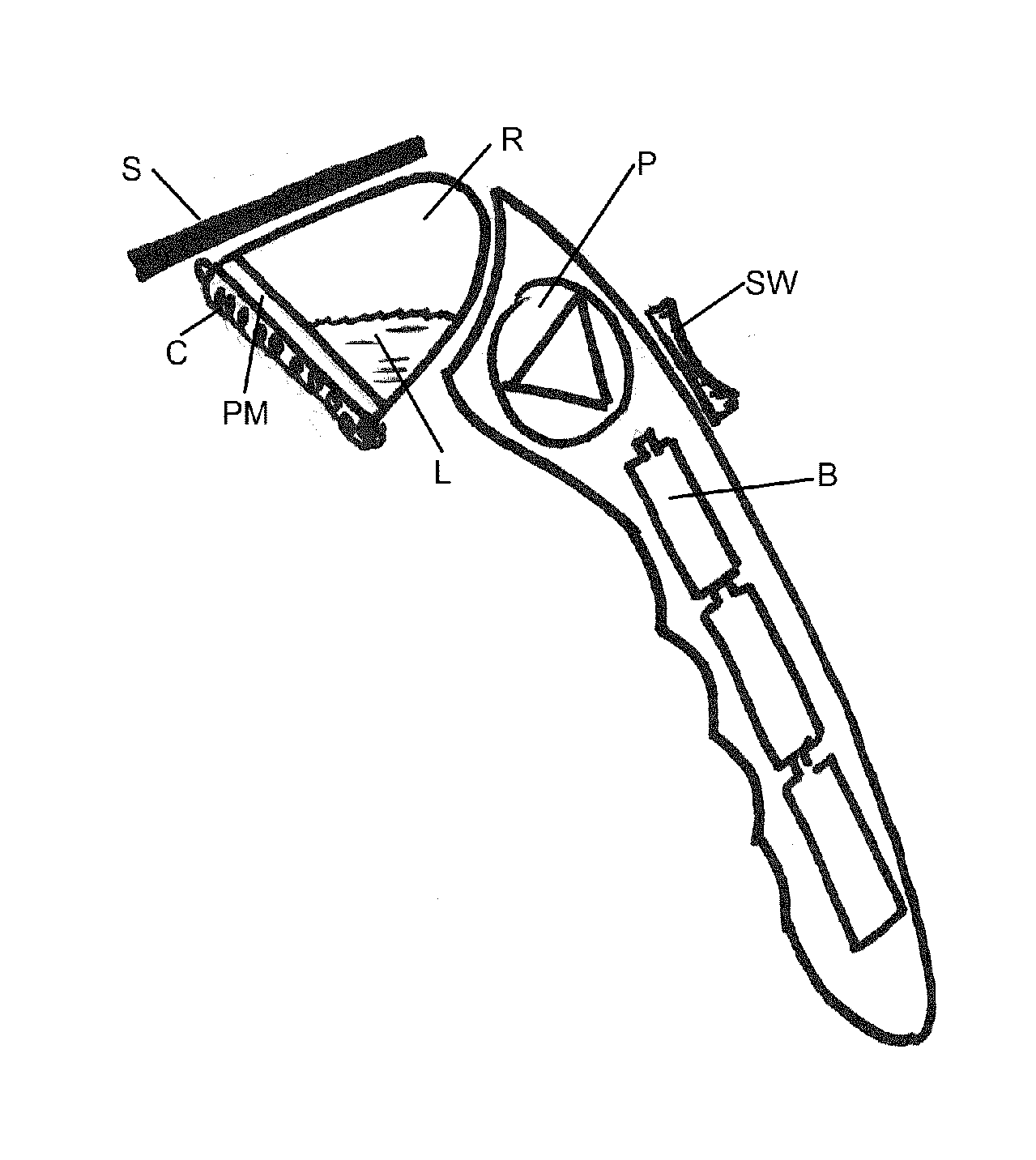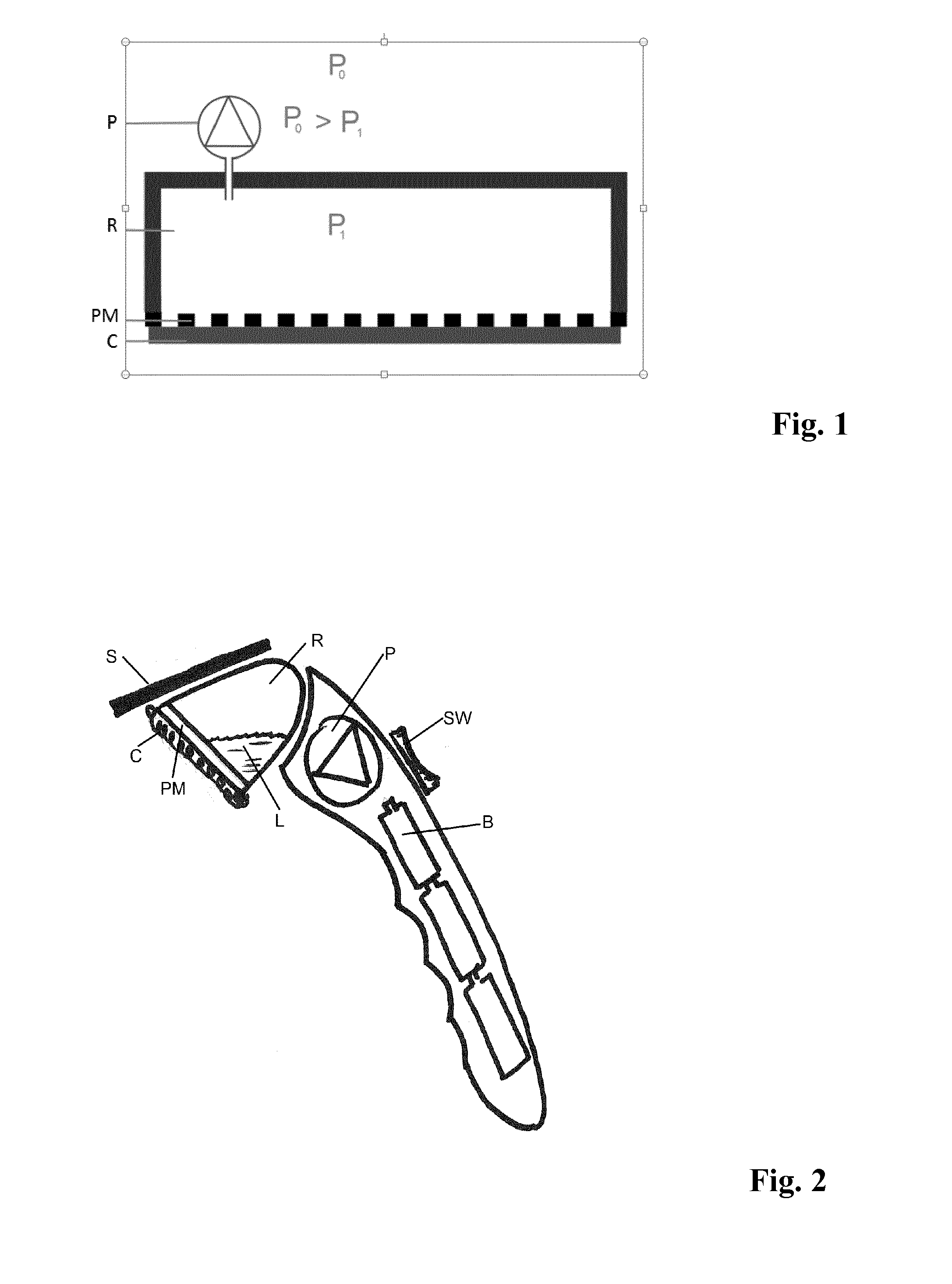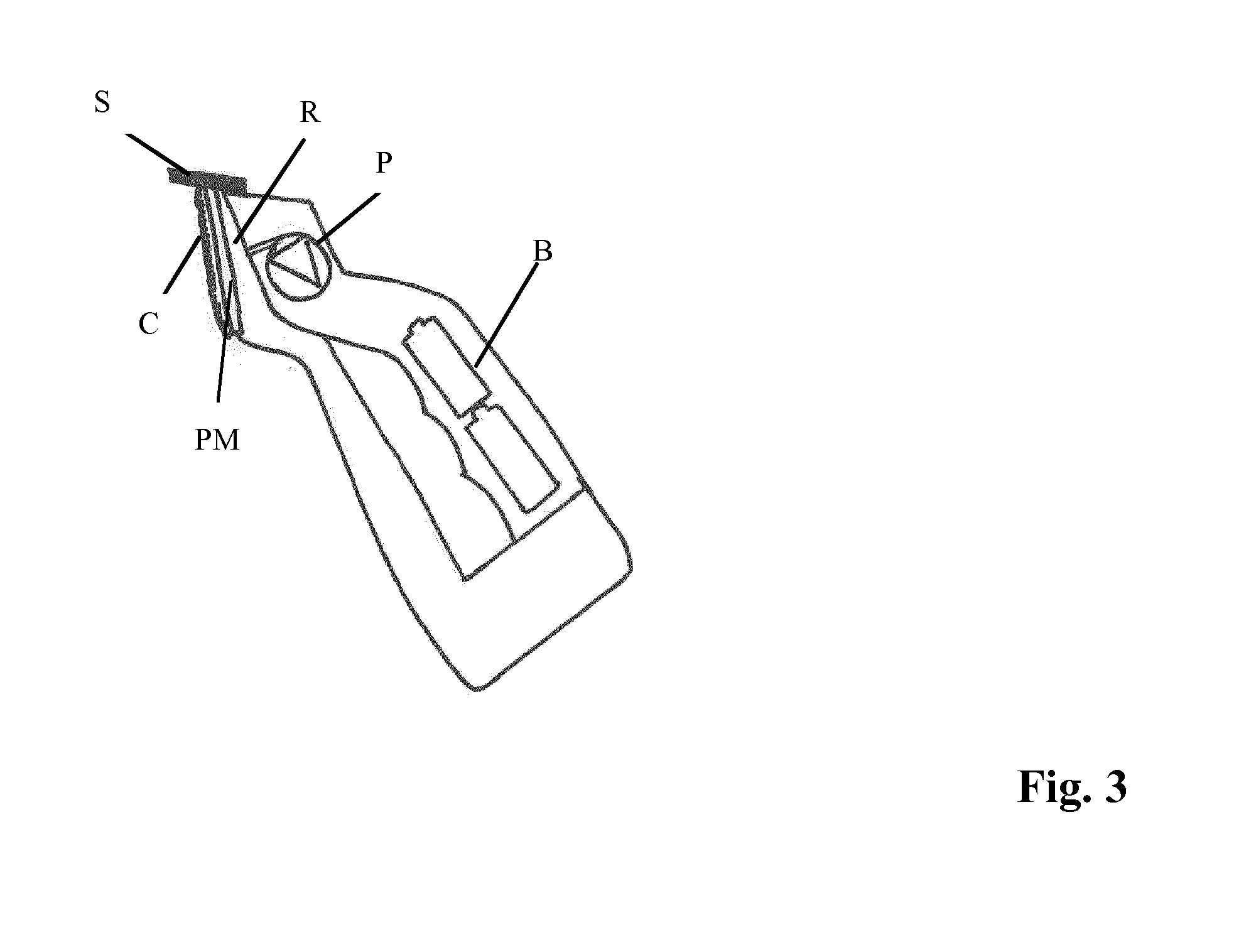Surface cleaning device
a cleaning device and surface technology, applied in the direction of vacuum cleaners, carpet cleaners, domestic applications, etc., can solve the problems of damage to the floor, poor cleaning performance, and difficulty in controlling the amount of liquid left on the floor
- Summary
- Abstract
- Description
- Claims
- Application Information
AI Technical Summary
Benefits of technology
Problems solved by technology
Method used
Image
Examples
Embodiment Construction
[0022]The essence of the embodiment of FIG. 1 is the porous material PM and the contact area with the cloth C. The porous material PM is preferably hydrophilic, and the pore size is chosen in such a manner that the material has a preference to pass liquid above air when a pressure difference is applied. Tests showed that a pore size between 1 μm and 50 μm is suited for this application.
[0023]The porous material PM may be a plastic sheet having pores. Alternatively, the porous material PM can be a porous polymer with liquid permeable properties as available from Porex Corporation and other porous polymer manufacturers.
[0024]The porous material PM is a part of the reservoir R or part of a soleplate that is a housing for the cloth or sponge to rest upon. The porous plastic is important as it has two functions:[0025]a. Allow moisture from the cloth C to pass to the reservoir R because of under-pressure;[0026]b. Do not allow the moisture collected in the reservoir R to come out again, i....
PUM
 Login to view more
Login to view more Abstract
Description
Claims
Application Information
 Login to view more
Login to view more - R&D Engineer
- R&D Manager
- IP Professional
- Industry Leading Data Capabilities
- Powerful AI technology
- Patent DNA Extraction
Browse by: Latest US Patents, China's latest patents, Technical Efficacy Thesaurus, Application Domain, Technology Topic.
© 2024 PatSnap. All rights reserved.Legal|Privacy policy|Modern Slavery Act Transparency Statement|Sitemap



